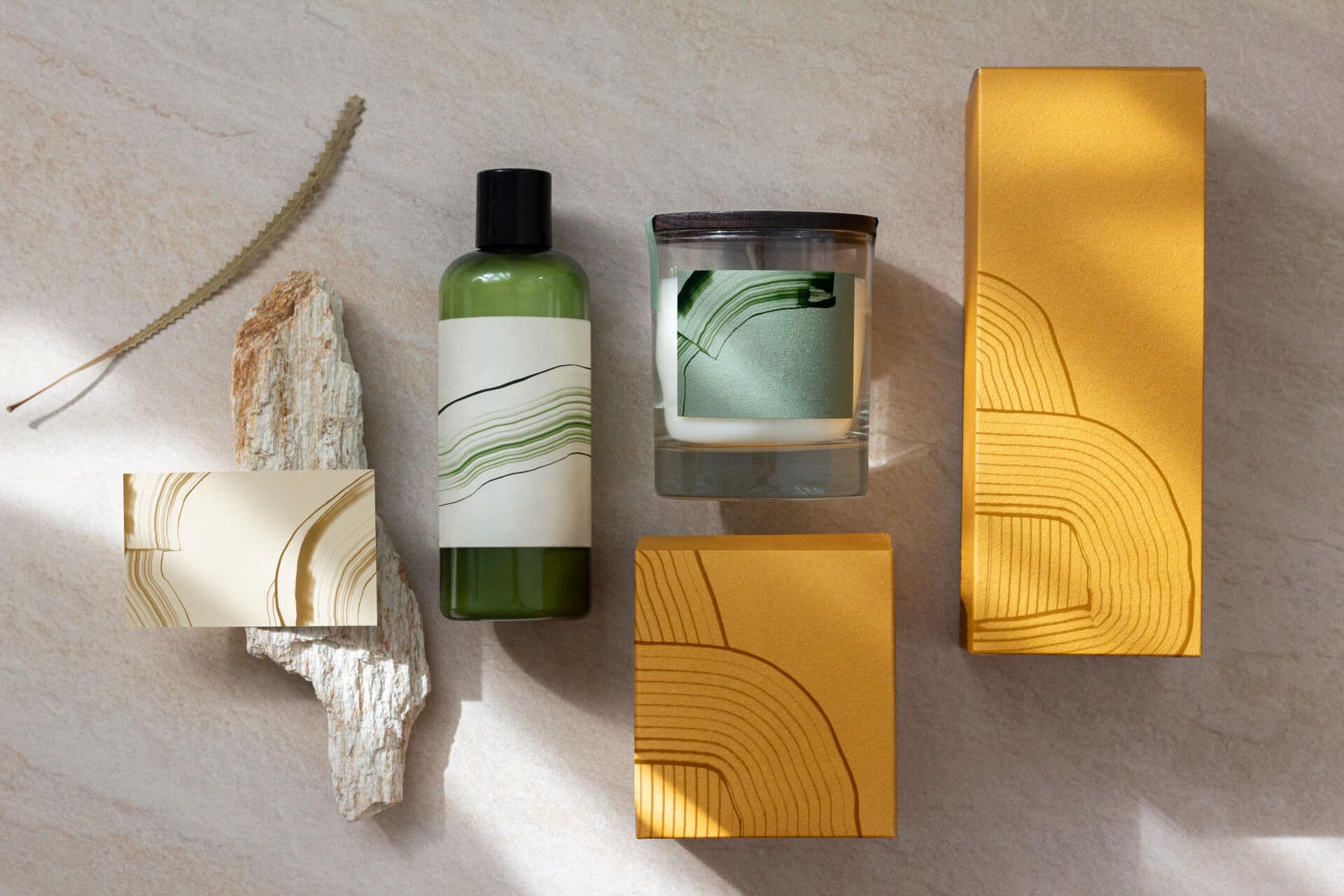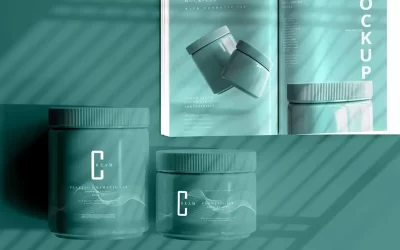It is universally understood that product packaging plays just as significant a role as the product itself when it comes to buying and receiving goods. Customer retention is increased greatly when the packaging of a product is just as special as what is inside. It also plays a significant role in brand identity, providing another surface to market your brand and to establish your business as one of quality, style and value. It’s the perfect way to communicate with your target audience, as well as competitors. If you’re new to the world of custom packaging, fear not.
We’ve pulled together 10 principles of product packaging for beginners that will provide you with all you need to know when packaging your next product.
- Preparation is key
- Get the dimensions right first time
- Find the right material and style
- Protect the product itself
- Choose the type of print
- Consider a print coating
- Think about luxuries such as foil stamping
- Ensure a captivating design
- Check everything
- Put into production
Let’s take a look in more detail:
1. Preparation is key
The first thing you need to do is determine what it is you’re looking to achieve from your packaging. Give thought to what is inside the packaging; this will help to determine the size, shape and weight. Fragile products will need extra protection and heavier products might need more support for shipping and/or distribution. You will need to consider the number of units required, and work out the optimal volume for supply and demand. Give thought to your budget – consider the cost of packaging, production and shipping, as well as any additional requirements such as packaging fillers, and make sure there is contingency for increased shipping costs as rates vary. Also that you have enough time to produce and distribute, should you have a specific launch date, allowing for any shipping delays.
2. Measure twice, cut once
The dimensions of your custom packaging will have a great impact on materials, production and shipping, so its important to get it right. Measurements are always taken from inside the box, so ensure you have these correct from the very beginning. Consider the length, width and depth to produce a snug fit for your product, avoiding any transport damages and, in turn, reducing your carbon footprint.
3. Decisions, Decisions
There are so many types of product packaging to choose from, it’s important to find the right style for your brand and your product:
- A folding carton is the lightest, most flexible and most cost-effective of options, with a range of styles to consider.
- Corrugated packaging is highly durable and better fitted for heavy-duty products and shipping – again, with a wide range of styles to consider.
- If you’re looking for a more premium look, rigid boxes provide thicker materials and are usually wrapped with offset printed paper for a more integrated design.
Depending on what you are selling, paper bags and poly mailers are also good choices for smaller products that require less protection. And there are a range of eco-friendly options too, if a greener approach is something your company is pushing.
4. What’s inside the box?
Your product may require further protection or to be displayed in a certain way when the recipient opens the box. That is where inserts come into play. From foam inserts to protect fragile items, to plastic tray inserts, moulded pulp inserts and even cardboard inserts. Each option plays a huge factor in the unboxing experience, and each have their own plus points, depending on what you are presenting to your customer.
5. The fine print
Once you have decided on your packaging, you can begin to consider your printing options for your design.
- Offset printing provides a richer, clearer and more superior image quality. Requiring more printing plates, it is best used for mass production to be cost-effective – and can be used on all box types mentioned above.
- Digital printing offers a quicker turnaround and has less set up. However, the colour isn’t as rich as offset and it is only available with folding and corrugated packaging.
- Flexography printing is considered the modern-day letterpress, withstanding large quantities. It is best for simple structures and printing one or two colours. Its inexpensive and can be produced at speed.
6. The icing on the cake
If you want to complete the look further, consider a coating for your custom packaging. Not only will it add a layer of panache, it will also provide additional protection.
- Lamination, whether it’s matte or gloss is a great option! Gloss lamination also provides better protection against moisture and dust.
- AQ (Aqueous coating, has a faint gloss finish and is environmentally-friendly. It’s water-based coating dries fast and is ideal for food, household and fast-consuming products.
- UV coating gives a similar effect to lamination, and can be applied directly to the material, rather than an additional film.
- Varnish is the most cost-effective and can be matte, gloss, as well as other effects. However, it is the least durable and least popular options.
Other speciality coatings have becoming increasingly popular to create unique custom designs with greater impact, such as metallic, pearlescent and soft-touch coating for the velvet feel.
7. The cherry on top
In addition to coatings, you may want to consider other special finishes to catch the attention of your recipient. Foil stamping is a luxury choice and can create a distinctive look. Spot UV can be applied to a specific area, such as a logo to highlight these elements further. Embossing and debossing add depth and are commonly used on names and logos. Window patching is a good idea if you want to give a sneak peek as to what is inside.
8. Design matters
It’s all very well choosing the materials, printing options and extras. But all this is worthless without a captivating design. You want to draw attention to your custom packaging, and in doing so, arouse a positive response. If you are in need of a designer, it’s worth choosing someone who has knowledge and experience within custom packaging, as they can provide a design that works for you and will be suitable for print and production too. At Birch Print, we offer design and print management consultancy. We know good design is incredibly important for successful print marketing. And amazing design is even better! Our team will work with you to design visuals that bring your custom packaging plans to life, and manage all aspects from beginning to end.
9. Action artwork
Once the design is agreed, it’s time to prepare the templates and set the artwork up for the printer. Dielines and templates ensure the design is wrapped around the packaging correctly, leaving no room for error. So, it’s important that the measurements and specifications are correct as this will save time and money in the long run. The orientation of the dieline and template is also of great importance to ensure the artwork is placed correctly on the packaging. Templates can be scaled for ease, so long as the printers know the final size. And the artwork should always be supplied in 300dpi. We would always recommend producing a mock up at this stage or at least a 3D proof, especially if you are working to a new design or packaging style, to check you are happy with everything, and to avoid any design, spelling or printing errors.
10. Produce and ship
The final piece of the puzzle. This is where you can ‘sit back and relax’ as your custom product packaging goes into production. Timings for production and shipping will depend on any specific dates given to the print, the size of your packaging and the method of delivery. Nevertheless, you should be kept up-to-date by your print account manager and you will receive your finished product in due course. If you find you need to order product packaging on a consistent basis, it might be worth drawing up a schedule for future inventory expectations to maintain a healthy relationship with your printer and manage timings and expectations.
Packaging matters!
So, there you have it! Custom product packaging is a vital tool to market your business and communicate your company’s values and personality. It can make or break a business, so needs serious consideration. If you’re looking to create some product packaging to create a lasting impression or if you’re looking for some help and inspiration to transform your customer experience, we at Birch Print would love to hear from you! We understand product packaging is an important part of the customer experience and when a retailer takes extra effort to package their products, it positively resonates with customers. We specialise in print management and product packaging; our printed packaging services cater for all requirements, from branded and personalised packaging, through to luxury retail packaging. Call us on 0115 951 2468 or email us at: team@birchprint.co.uk.




